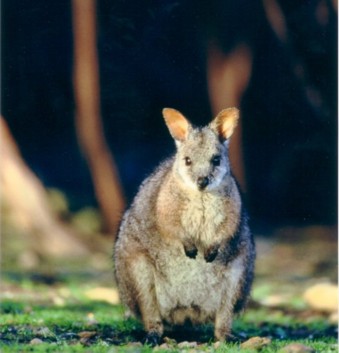As part of the genome project, Australian and American scientists are working to expand the DNA mapping of animals, to compare it to humans. The genetic distance of the kangaroo from the human may contribute to the study of reproduction * and on this occasion, kudos to the Walla system that translates scientific news and not New Age news....

American and Australian scientists announced on Tuesday that they are working together as part of the genome project with the aim of mapping additional DNA of an animal, so that it can be genetically compared to the DNA of humans, thus expanding knowledge about diseases and basic biology. Therefore, the genome of the kangaroo will soon be fully mapped to join the dog and the mouse.
Since the kangaroo is a marsupial mammal, and as such relatively distant genetically from humans, the differences between it and other mammals, such as humans, may contribute to understanding the biology of reproductive processes. "We anticipate that the information obtained in the kangaroo genome project will prove to be very valuable in medical research and agricultural research around the world," estimated John Brumby, the treasurer of the Australian state of Victoria.
The US National Human Genome Research Institute (NHGRI), which is part of the National Institutes of Health, has announced a partnership with the Australian Genome Research Agency, which is based in Melbourne. The announcement of the partnership was made at "Bio2004", the world's largest biotechnology conference that took place this week in San Francisco. "This scientific collaboration between the US and Australia represents another important step in our quest to more deeply understand the human genome," said NHGRI Director Dr. Francis Collins.
The kangaroo to be studied is the "Tamar wallaby", a small kangaroo that lives on the islands near the southern and western coasts of Australia. The last common ancestor of marsupials and humans lived 130 million years ago. Chimpanzees, by comparison, share ancestors with humans as far back as seven million years ago.
The genomes of the human, the rat and the fruit fly have been decoded
Due to the kangaroo's special nature of pregnancy and offspring rearing, this animal can provide more general insights into reproductive processes. Female wallabies conceive once a year and give birth around the same day each year. After giving birth, they mate again, usually within an hour of calving.
Marsupial mammals, such as the kangaroo, hatch embryos in early stages of development. After calving, the fetus crawls into an external pouch and feeds on milk secreted by the mother's body. This, in contrast to other mammals, which carry the fetus inside the body and nourish it through the placenta.
Advertisement The Baylor School of Medicine in Houston, whose researchers will carry out the decoding, was previously involved in decoding the genomes (in whole or in part) of the cow, the human, the fruit fly, the rat, the rhesus monkey and the red beetle. The projects to decipher the genomes of man, the fruit fly and the rat have already been completed. Researchers in the US are already working on a deciphering draft of another marsupial - the South American opossum.
"Australia is at the forefront of marsupial genome research, and has already collected valuable information on the genetic segments that control milk production and milk composition," Brumby says. "This new agreement, made possible by a grant from the Victorian Government, will ensure that Australia continues to lead in this important area of research. Deciphering the secrets of the new genomes may lead to improved milk yield in cows, the production of antibiotic substances and new treatments for diseases such as cancer, damage to the spine in humans and mad cow disease in cattle."
